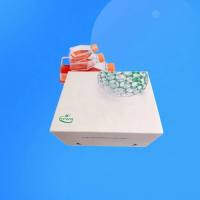Preparation of Rat Lung Cells for Flow Cytometry
互联网
664
Morphologically, the lung is a complex organ containing over 40 different cell types (1 ). Although species and strain dependent, in the Fischer rat, the most common cell types include: endothelial, 33%; Type I, 6.5%; Type II, 12%; macrophages, 8%; ciliated and nonciliated bronchiolar epithelial (Clara) cells, 1.3 and 0.7%, respectively (2 ,3 ). The lungs from an “adult” rat comprise about 4 � 108 cells (3 ). Unlike the liver, there is no one enzyme, such as collagenase, universally used for cell dispersion. Instead, a wide variety of proteases, such as Protease I or XIV (4 ,5 ), have been recommended. Enzyme cocktails have often been adjusted to suit the cell type being isolated: e.g., collagenase/trypsin/elastase for Type I cells (6 ), elastase/trypsin for Type II cells (7 ), and hyaluronidase/cytochalasin for tracheal epithelial cells (8 ). However, such proteolytic enzymes may lead to the loss of specific cell surface markers. There is general agreement that DNAse is necessary to minimize cellular reaggregation once the lung cells have been isolated. This procedure describes the use of the proteolytic enzyme subtilisin, recently introduced for the isolation of lung cells (9 ), which has been particularly effective in the preparation of functional Clara cells following their separation by flow cytometry (10 ). Type II cells have also been isolated using similar procedures (unpublished), and macrophages are lavaged from the lung during the perfusion process and can be recovered if required.









